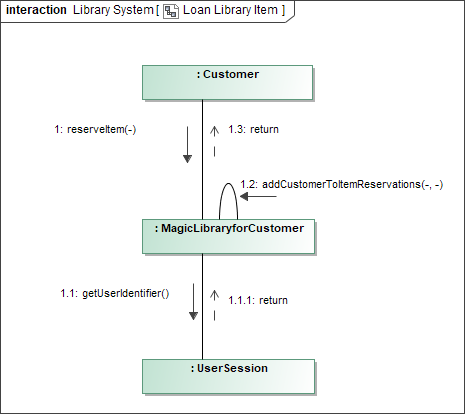Overview
The Communication diagram is the UML 2.0 version of the Collaboration diagram. It illustrates various static connections between objects, models, and their interactions. It also presents a collaboration that contains a set of instances as well as their required relationships given in a particular context, and includes an interaction that defines a set of messages. These messages specify the interaction between the classifier roles within a collaboration that will serve to achieve the desired result.
A Communication diagram is given in two different forms: at the instance level or at the specification level.
Purpose
A Communication diagram can be used to model the interactions between objects or parts in terms of sequenced messages. It represents a combination of information taken from Class, Sequence, and Use Case diagrams describing both the static structure and dynamic behavior of a system.
Usage
A Communication diagram can be used to:
- model message passing between objects or roles that deliver functionalities of Use Cases and operations
- capture interactions that show the messages passed between objects and roles
- model alternative scenarios within Use Cases or operations that involve the collaboration of different objects and interactions
- model mechanisms within the architectural design of the system
- identify objects, their attributes, and operations that participate in Use Cases.
Summary
Communication diagrams are valuable because they:
- reveal the structural requirements that are necessary to complete a task
- explicitly identify the objects that participate in an interaction
- reveal the interface requirements of the participating classes
- identify the structural changes required to satisfy an interaction
- identify data that passed as part of interactions.
Example of a Communication diagram
Related pages
